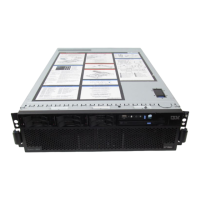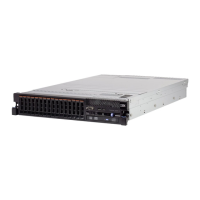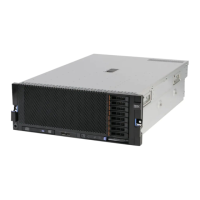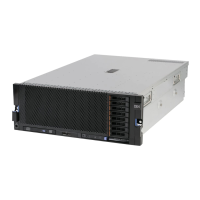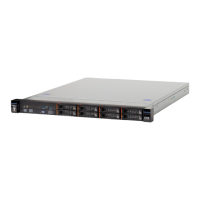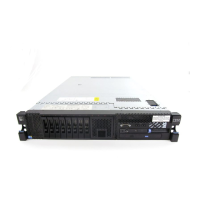Chapter 2. IBM eX5 technology 23
Memory performance test on various memory speeds
Based on benchmarks using an IBM internal load generator run on an x3850 X5 system
configured with four X7560 processors and 64x 4 GB quad-rank DIMMs, the following results
were observed:
Peak throughput per processor observed at 1066 MHz: 27.1 gigabytes per second (GBps)
Peak throughput per processor observed at 978 MHz: 25.6 GBps
Peak throughput per processor observed at 800 MHz: 23.0 GBps
Stated another way, an 11% throughput increase exists when frequency is increased from
800 MHz to 978 MHz; a 6% throughput increase exists when frequency is increased from
978 MHz to 1066 MHz.
2.3.2 Memory DIMM placement
The eX5 servers support a variety of ways to install memory DIMMs, which we describe in
detail in later chapters. However, it is important to understand that because of the layout of
the SMI links, memory buffers, and memory channels, you must install the DIMMs in the
correct locations to maximize performance.
Figure 2-6 on page 24 shows eight possible memory configurations for the two memory cards
and 16 DIMMs connected to each processor socket in an x3850 X5. Similar configurations
apply to the x3690 X5 and HX5. Each configuration has a relative performance score. The
following key information from this chart is important:
The best performance is achieved by populating all memory DIMMs in the server
(configuration 1 in Figure 2-6 on page 24).
Populating only one memory card per socket can result in approximately a 50%
performance degradation (compare configuration 1 with 5).
Memory performance is better if you install DIMMs on all memory channels than if you
leave any memory channels empty (compare configuration 2 with 3).
Two DIMMs per channel result in better performance that one DIMM per channel
(compare configuration 1 with 2, and compare 5 with 6).
What about 1333 MHz? The maximum memory speed that is supported by Xeon 7500
and 6500 processors is 1066 MHz (1333 MHz is not supported). Although the 1333 MHz
DIMMs are still supported, they can operate at a maximum speed of 1066 MHz.
Key points regarding these benchmark results:
Use these results only as a guide to the relative performance between the various
memory speeds, not the absolute speeds.
The benchmarking tool that is used accesses only local memory, and there were no
remote memory accesses.
Given the nature of the benchmarking tool, these results might not be achievable in a
production environment.
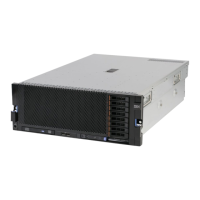
